
漢德百科全書 | 汉德百科全书
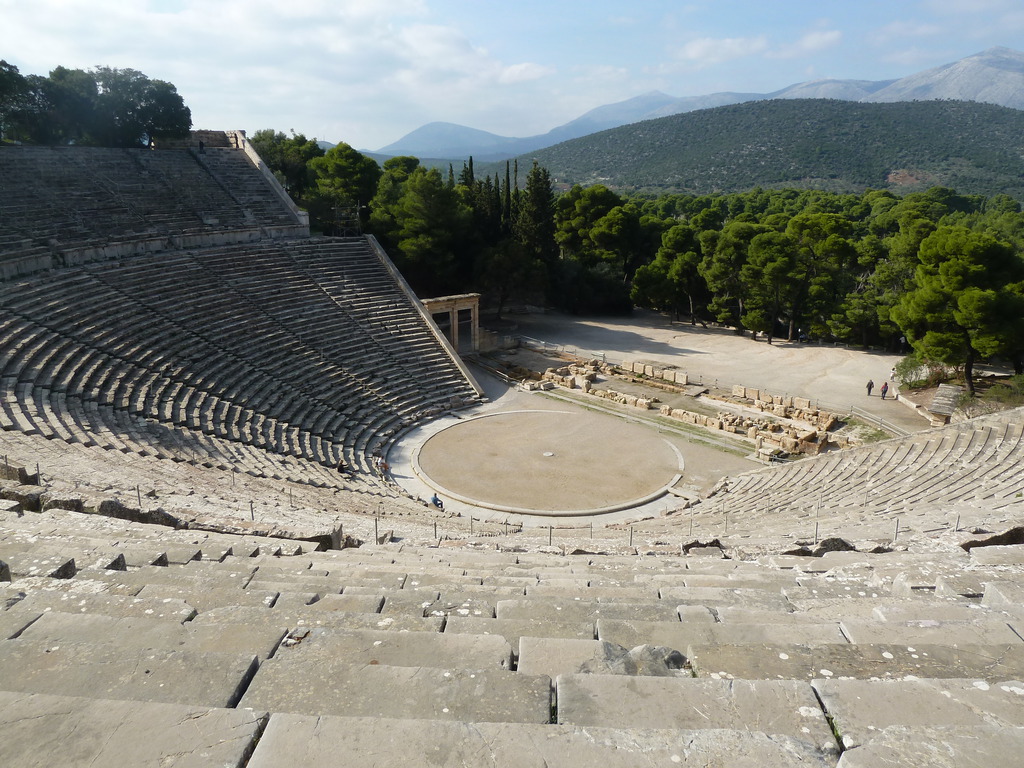
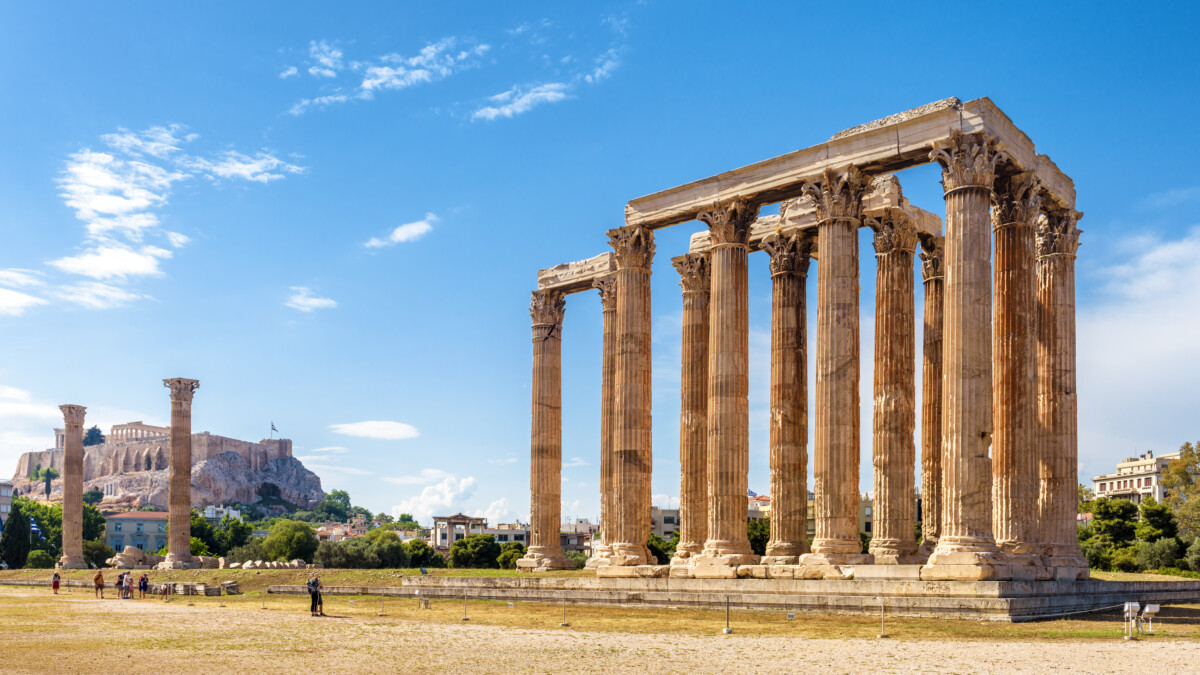
Das Olympieion (auch Tempel des Olympischen Zeus) in Athen war einer der größten Tempel im antiken Griechenland. Der Bau geht auf das 6. Jahrhundert v. Chr. zurück, wurde aber erst unter dem römischen Kaiser Hadrian im 2. Jahrhundert n. Chr. vollendet. Das Olympieion befindet sich rund 500 m östlich der Akropolis.
奥林匹亚宙斯神庙 (希腊语:Ναὸς τοῦ Ὀλυμπίου Διός, Naos tou Olympiou Dios), 又称Olympieion,是一座已毁的供奉宙斯的神庙,位于希腊首都雅典市中心,宪法广场以南700米,雅典卫城东南方500米。它始建于公元前6世纪,计划建成古代世界最伟大的寺庙,直到638年后,公元2世纪罗马帝国皇帝哈德良在位期间才得以完成。在罗马帝国时期,它是希腊最大的神庙,拥有古代世界最大的神像之一。
公元3世纪遭蛮族洗劫后,该庙被废弃。在罗马帝国灭亡后的数个世纪中,该庙的石料被大量取走,用于其他建筑的材料。今天仍可见到其遗迹,是雅典一个主要的旅游景点。
2007年1月21日,一群希腊多神教教徒在神庙举行崇拜宙斯的仪式。
The Temple of Olympian Zeus (Greek: Ναός του Ολυμπίου Διός, Naós tou Olympíou Diós), also known as the Olympieion or Columns of the Olympian Zeus, is a former colossal temple at the centre of the Greek capital Athens. It was dedicated to "Olympian" Zeus, a name originating from his position as head of the Olympian gods. Construction began in the 6th century BC during the rule of the Athenian tyrants, who envisaged building the greatest temple in the ancient world, but it was not completed until the reign of the Roman Emperor Hadrian in the 2nd century AD, some 638 years after the project had begun. During the Roman period the temple -that included 104 colossal columns- was renowned as the largest temple in Greece and housed one of the largest cult statues in the ancient world.
The temple's glory was short-lived, as it fell into disuse after being pillaged during a barbarian invasion in the 3rd century AD, just about a century after its completion. It was probably never repaired and was reduced to ruins thereafter. In the centuries after the fall of the Roman Empire, it was extensively quarried for building materials to supply building projects elsewhere in the city. Despite this, a substantial part of the temple remains today, notably sixteen of the original gigantic columns, and it continues to be part of a very important archaeological site of Greece.
L’Olympiéion (grec ancien : Ὀλυμπιεῖον), ou temple de Zeus olympien (grec ancien : Ναὸς τοῦ Ὀλυμπίου Διός), est situé au pied de l’Acropole d'Athènes. C’est un temple très vaste, d’ordre corinthien, dont il reste aujourd’hui 15 colonnes. Sa construction débuta au VIe siècle av. J.-C., et fut achevée par Hadrien en 131.
Il tempio di Zeus Olimpio (greco: Ναός του Ολυμπίου Διός) è un tempio situato ad Atene, in Grecia. Il tempio è situato a circa 500 metri dall'Acropoli e a circa 700 metri a sud del cuore di Atene, piazza Syntagma. Durante il periodo ellenistico ed il periodo romano è stato il tempio più grande della Grecia.
El templo de Zeus Olímpico, también conocido como el Olimpeion (griego Ναός του Ολυμπίου Διός, o Naos tou Olimpiou Dios), es un templo de Atenas. Aunque comenzado en el siglo VI a. C., no fue terminado hasta el reinado del emperador Adriano, en el siglo II. En las épocas helenística y romana era el templo más grande de Grecia.
ゼウス神殿またはオリュンピア=ゼウス神殿(ギリシア語: Ναὸς τοῦ Ὀλυμπίου Διός,ラテン語: Templum Iovis Olympii)は、ギリシャ、アテネのアクロポリスの東側にある神殿で、オリュンポス十二神の中の最高神であるゼウスに捧げられた神殿である。紀元前6世紀、僭主政のアテナイの時代に建設が始まったが、古代の世界で最大級であった神殿は完成させることがでなかった。神殿の完成は2世紀にローマ皇帝ハドリアヌスにより成し遂げられた。ローマ帝国期を通じて建てられた神殿の中で、この神殿は最大のものであった。
オリュンピア=ゼウス神殿またはオリュンピアのゼウス神殿の名前は、ハドリアヌスがつくらせた、金と象牙のゼウス像がオリュンピアのゼウス神殿にあったもののコピーであったことに由来する[1]。日本語でオリンピア=ゼウス神殿と表記されることもある。
L’Olympiéion (grec ancien : Ὀλυμπιεῖον), ou temple de Zeus olympien (grec ancien : Ναὸς τοῦ Ὀλυμπίου Διός), est situé au pied de l’Acropole d'Athènes. C’est un temple très vaste, d’ordre corinthien, dont il reste aujourd’hui 15 colonnes. Sa construction débuta au VIe siècle av. J.-C., et fut achevée par Hadrien en 131.
Le temple est situé au sud de l'Acropole, à environ 700 mètres du centre d'Athènes. Les fondations du premier temple remontent à -515, à l'époque de Pisistrate, mais le chantier s'est interrompu lorsque Hippias, fils de Pisistrate, fut ostracisé, en -510.
Durant la démocratie athénienne, le temple est resté inachevé, apparemment parce qu'il n'était pas dans l'esprit du temps de construire des bâtiments d'une telle ampleur. Dans sa Politique, Aristote le donne comme l'exemple de ce que les régimes tyranniques imposent inutilement à leurs populations. Les travaux ne reprennent qu'au IIIe siècle av. J.-C. avec la souveraineté macédonienne, et continuent sous le roi Antiochus IV Épiphane, qui charge l'architecte romain Decimus Cossutius de concevoir le plus grand temple du monde. Lorsque Antiochus meurt en -164, la construction du temple est à nouveau arrêtée.
En -86, Sylla, imposant à la Grèce la domination romaine, fit transporter au Capitole deux chapiteaux inachevés de l'Olympiéion, qui eurent une influence déterminante sur l'architecture romaine par l'adoption définitive de l'ordre corinthien dans toutes ses réalisations à venir.
Le temple ne fut achevé qu'en 129 (ou 131) apr. J.-C., sous l'impulsion de l'empereur Hadrien, grand admirateur de la culture grecque.
Il tempio di Zeus Olimpio (greco: Ναός του Ολυμπίου Διός) è un tempio situato ad Atene, in Grecia. Il tempio è situato a circa 500 metri dall'Acropoli e a circa 700 metri a sud del cuore di Atene, piazza Syntagma. Durante il periodo ellenistico ed il periodo romano è stato il tempio più grande della Grecia. Il tempio era costruito in marmo pentelico e misurava 108 metri in lunghezza e 41 in larghezza. Consisteva in 104 colonne corinzie, ognuna alta 17 metri. Solo 15 di queste colonne rimangono tuttora in piedi. La sedicesima colonna venne colpita da un fulmine durante un temporale nel 1852 e cadde sull'antica pavimentazione del tempio, dove è stata lasciata. Dell'imponente tempio rimangono, oltre alle colonne, il crepidoma e alcune porzioni dell'architrave tripartito.
El templo de Zeus Olímpico, también conocido como el Olimpeion (griego Ναός του Ολυμπίου Διός, o Naos tou Olimpiou Dios), es un templo de Atenas. Aunque comenzado en el siglo VI a. C., no fue terminado hasta el reinado del emperador Adriano, en el siglo II. En las épocas helenística y romana era el templo más grande de Grecia.
El templo se ubica a unos 500 metros al sureste de la Acrópolis de Atenas y a unos 700 m al sur de la Plaza Sintagma (centro de Atenas).
Sus cimientos fueron colocados en el sitio de un primer templo por el tirano Pisístrato en 515 a. C., pero el trabajo fue abandonado cuando su hijo, Hipias, fue derrocado en 510 a. C.1 Durante los años de la democracia ateniense, el templo fue dejado incompleto, porque se pensó que atentaba contra la hybris construir a tal escala. Aristóteles, en la Política, citó el templo como un ejemplo de cómo las tiranías atraían al pueblo a grandes obras de estado y lo dejaban sin tiempo, energía o medios para rebelarse.2
El trabajo fue reanudado en 174 a. C., durante la dominación macedonia de Grecia, bajo el patrocinio del rey helenístico Antíoco IV Epífanes, que contrató al arquitecto romano Cosucio para diseñar el templo más grande del mundo conocido. Cuando Antíoco murió en 164 a. C. el trabajo estaba retrasado otra vez.1
En 86 a. C., después de que las ciudades griegas cayeran bajo dominio romano, el general Sila llevó dos columnas del templo inacabado a Roma, para adornar el templo de Júpiter Capitolino en la colina Capitolina. Estas columnas influyeron en el desarrollo del estilo corintio en Roma.
En el siglo II, el templo fue retomado por el emperador Adriano, un gran admirador de la cultura griega, quien finalmente lo llevó a su conclusión en 129 (algunas fuentes dicen que en 131).1
No se sabe cuando fue destruido el edificio pero, como muchos edificios grandes de Grecia, es probable que fuera destruido por un terremoto en la Edad Media. La mayor parte de sus ruinas se usaron como materiales de construcción.
Олимпейо́н, храм Зевса Олимпийского (греч. Ναός του Ολυμπίου Διός) — самый большой храм Греции, строившийся с VI века до н. э. до II века н. э.; располагается в Афинах в 500 метрах к юго-востоку от Акрополя и около 700 метров южнее площади Синтагма.
Согласно легенде храм был построен на месте святилища мифического Девкалиона, праотца греческого народа.
Возведение храма было начато в период тирании Писистрата, в 515 г. до н. э. Афинская демократия интересовалась храмом мало, Фемистокл использовал его части для оборонительной стены, связавшей Афины с Пиреем (её раскопанный участок виден рядом с храмом).
В 175—164 гг. до н. э. строительство храма Зевса (уже в коринфском ордере) продолжил царь эллинистической Сирии Антиох IV Эпифан. В 84 году до н. э. римский диктатор Сулла снял с колонн несколько резных капителей и употребил их для строительства храма его римского аналога, Юпитера Капитолийского. Несмотря на это Тит Ливий почти столетие спустя называет афинский храм Зевса «единственным на свете, достойным этого божества».
Завершён храм был только через 650 лет после начала строительства, при римском императоре Адриане, поклоннике греческой культуры. Освящение нового храма, который Адриан посвятил Зевсу Олимпийскому, было приурочено ко второму визиту императора в Афины и стало центральным пунктом программы Всегреческих празднеств 132 г.
Храм был сильно повреждён во время нашествия герулов в 267 г. и едва ли восстанавливался после этого. После того как Феодосий запретил почитание языческих богов, элементы храма были использованы при строительстве церквей и домов.
В настоящее время от храма уцелел один угол, состоящий из 14 колонн, увенчанных коринфскими капителями, 2 отдельностоящие колонны и одна поваленная.

Der Apollontempel bei Bassae (auf der Peloponnes, in 1150 Metern Höhe, Gemeinde Ira, Griechenland) gehört zum UNESCO-Weltkulturerbe und ist der am zweitbesten erhaltene griechische Tempel des Mutterlandes (nach dem Hephaisteion in Athen). Er war dem Heilgott Apollon Epikourios geweiht.
巴赛(希腊语: Βάσσες, 古希腊语: Βάσσαι)是希腊麦西尼亚州东北部的一处考古遗址。在古希腊时期,曾是阿卡迪亚的一部分。




 Architecture
Architecture
 Roman architecture
Roman architecture

 Architecture
Architecture
 Greek architecture
Greek architecture

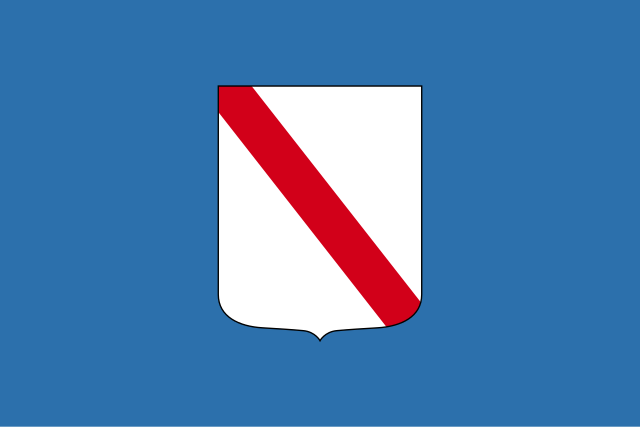 Campania
Campania
 Italy
Italy

 World Heritage
World Heritage

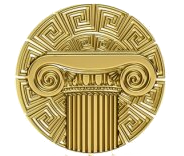 Civilization
Civilization
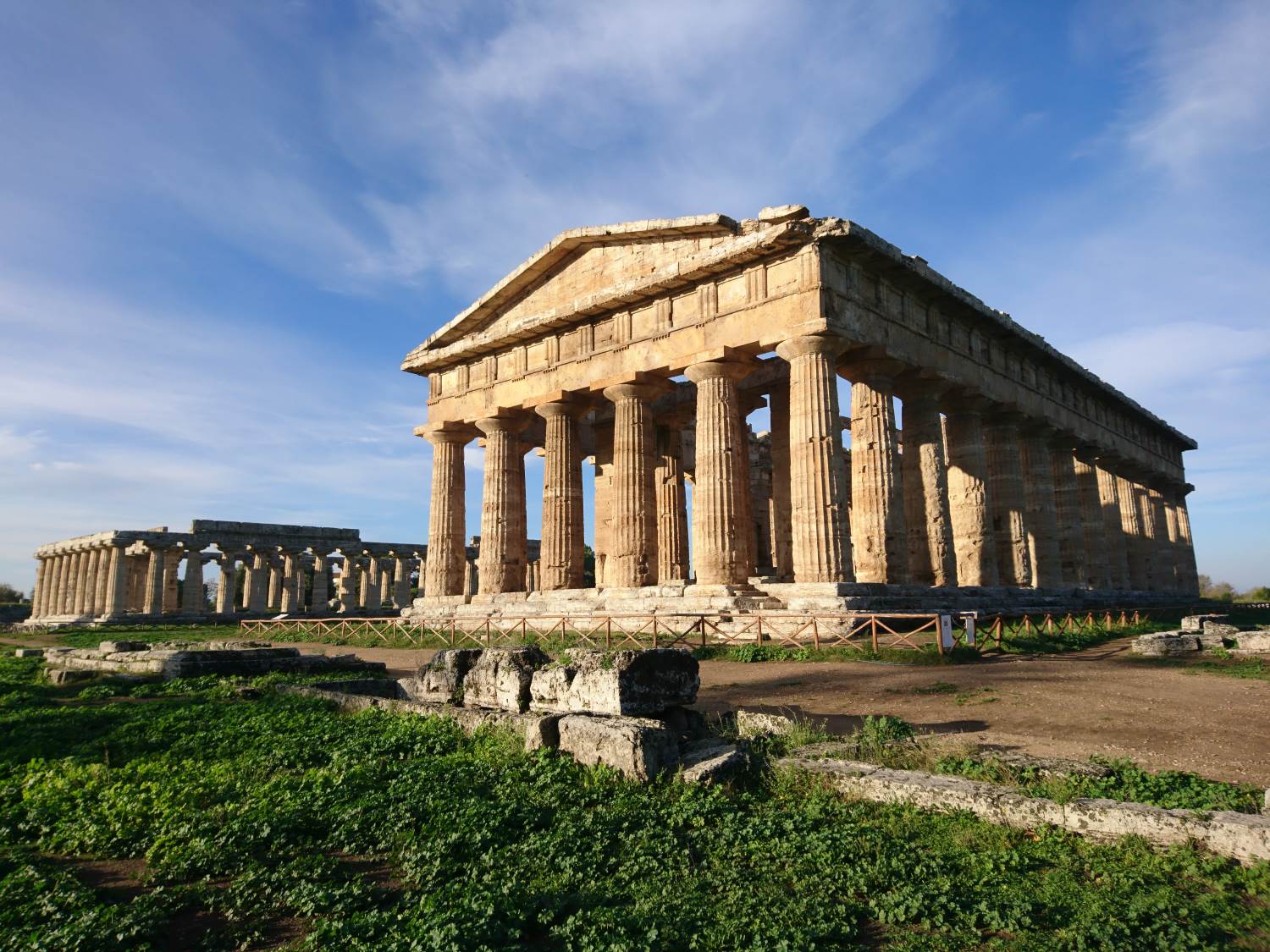


Der Pergamonaltar ist ein monumentaler Altar, der unter König Eumenes II. in der ersten Hälfte des 2. Jahrhunderts v. Chr. auf dem Burgberg der kleinasiatischen Stadt Pergamon errichtet wurde und dessen Rekonstruktion mit den originalen Friesen heute im Berliner Pergamonmuseum zu sehen ist.
Der Altar war 35,64 Meter breit und 33,40 Meter tief. Die von Westen auf den Altar führende Freitreppe hatte eine Breite von fast 20 Metern. Es handelt sich um eines der bedeutendsten erhaltenen Kunstwerke des Hellenismus, wenn nicht der griechischen Antike insgesamt: Den Sockel schmückte ein Hochrelief, das den Kampf der Giganten gegen die griechischen Götter darstellte. Ein zweiter Fries an den Hofwänden des Pergamonaltars erzählt in einem Zyklus aufeinanderfolgender Reliefbilder die Legende von Telephos. Telephos, ein Sohn des Helden Herakles und der tegeatischen Königstochter Auge, galt als mythischer Gründer Pergamons.
1878 begann der deutsche Ingenieur Carl Humann auf dem Burgberg von Pergamon mit offiziellen Ausgrabungen, die 1886 ihren vorläufigen Abschluss fanden. Das Hauptziel der Ausgrabungen war es, die Altarfriese wiederzugewinnen und das Fundament des Altars freizulegen. Später wurden weitere Baukomplexe der pergamenischen Akropolis freigelegt. In Verhandlungen mit der beteiligten türkischen Regierung konnte vereinbart werden, dass alle damals gefundenen Fragmente der Altarfriese den Berliner Museen zugesprochen wurden.
In Berlin setzten italienische Restauratoren die Platten der Friese aus tausenden Fragmenten wieder zusammen. Um die Friese zusammenhängend ausstellen zu können, wurde auf der Museumsinsel eigens ein Museum errichtet. Der erste Bau von 1901 wurde 1909 zugunsten eines größeren, 1930 vollendeten Neubaus abgerissen. Nach den dort ausgestellten Friesen und einer Rekonstruktion der Westfront des Pergamonaltars erhielt dieser Museumsneubau von den Berlinern den Namen Pergamonmuseum. Der Pergamonaltar ist heute das bekannteste Ausstellungsstück der Antikensammlung auf der Museumsinsel.
帕加马祭坛/别迦摩祭坛(古希腊语:Βωμός τῆς Περγάμου)是一座宏伟的建筑,兴建于公元前2世纪上半叶国王欧迈尼斯二世统治时期,位于小亚细亚帕加马古城的卫城。其复原物陈列在柏林博物馆岛的佩加蒙博物馆。
这座建筑宽35.64米,前后进深33.4米;单是前面的楼梯就宽约20米。基座上的浮雕描绘巨人与奥林匹斯十二主神之间的战斗,称为“巨人战役”(Gigantomachia)。
1878年,德国工程师卡尔Humann开始在帕加马卫城正式发掘,一直持续到1886年,使卫城的一些古建筑物重见天日。在与土耳其政府的谈判中,同意将当时发现的所有碎片成为柏林博物馆的财产。
在柏林,意大利修复者对数千碎片进行了复原。为了展出这一成果,于1901年在柏林的博物馆岛建立了一座新的博物馆。但是第一座别迦摩博物馆不敷使用,结构也不合理,于是在1909年被拆毁,代之以目前大得多的博物馆,于1930年开放。虽然它收藏了各种藏品,尤其是复原的古巴比伦伊什塔尔城门,该市的居民仍然根据复原祭坛的西立面,将新博物馆称为别迦摩博物馆。
Pergamon (altgriechisch τὸ Πέργαμον, das Pérgamon, seltener ἡ Πέργαμος, die Pérgamos; lateinisch Pergamum; heute Bergama) war eine antike griechische Stadt nahe der Westküste Kleinasiens in der heutigen Türkei, etwa 80 km nördlich von Smyrna (dem heutigen İzmir). Während des 3. und 2. Jahrhunderts v. Chr. war Pergamon Hauptstadt des Pergamenischen Reichs, das sich über große Teile des westlichen Kleinasiens erstreckte. Unter der kunstsinnigen Dynastie der Attaliden, die bestrebt war, ein neues Athen zu schaffen, wurde die Stadt zu einem der bedeutendsten Kulturzentren des Hellenismus. Nach einer antiken Legende wurde das nach Pergamon benannte Pergament in dieser Stadt erfunden. Tatsächlich war Pergamon ein Zentrum der Pergamentproduktion.
Pergamon lag am nördlichen Rand einer Ebene, die von dem Fluss Kaïkos (dem heutigen Bakırçay) gebildet wurde. Die Bebauung erhebt sich zu Füßen, an den Hängen und auf der Hochfläche der Akropolis, deren Kern aus einem etwa 335 Meter hohen, tafelbergförmigen Massiv aus Andesitgestein besteht. Der Burgberg fällt nach Norden, Osten und Westen sehr steil ab, während die Südseite über drei natürliche Absätze einen flacheren Übergang zur Ebene bildet. Westlich durchfließt der Selinus (heute Bergamaçay) an der Akropolis vorbei die Stadt, im Osten fließt der Ketios (heute Kestelçay).
帕加马/别迦摩(希腊语:Πέργαμος;现代土耳其语:Bergama)是安纳托利亚古国,现在是土耳其境内贝尔加马的一处历史遗迹。
别迦摩原是密细亚(安纳托利亚西北部)的一座古希腊殖民城邦,距爱琴海约26公里。城市本身坐落在巴克尔河北岸的一个海角上。在亚历山大大帝的东征之后,地中海地区进入了所谓希腊化时代,别迦摩则在继业者战争之后变成了一个由独立王公统治的王国。在阿塔罗斯王朝(前282年~前129年)统治下,别迦摩一度成为一个相当强盛的国家。
Pergamon (/ˈpɜːrɡəmən/ or /ˈpɜːrɡəmɒn/), or Pergamum (/ˈpɜːrɡəməm/) (Ancient Greek: τὸ Πέργαμον or ἡ Πέργαμος), was a rich and powerful ancient Greek city in Aeolis. It is located 26 kilometres (16 mi) from the modern coastline of the Aegean Sea on a promontory on the north side of the river Caicus (modern-day Bakırçay) and northwest of the modern city of Bergama.
During the Hellenistic period, it became the capital of the Kingdom of Pergamon under the Attalid dynasty in 281–133 BC, who transformed it into one of the major cultural centres of the Greek world. Many remains of its impressive monuments can still be seen and especially the outstanding masterpiece of the Pergamon Altar.[1] Pergamon is cited in the Book of Revelation as one of the seven churches of Asia.
The city centres around a 335 metre high mesa of andesite, which formed its acropolis. This mesa falls away sharply on the north, west and east sides, but three natural terraces on the south side provide a route up to the top. To the west of the acropolis, the Selinus river (modern Bergamaçay) flows through the city, while the Cetius (modern Kestelçay) passes by to the east.
Pergame (en grec Πέργαμον / Pérgamon, littéralement « citadelle », en latin Pergamum) est une ancienne ville d'Asie Mineure, en Éolide située au nord de Smyrne, au confluent du Caïque et du Cétios, à environ 25 km de la mer Égée. À l'heure actuelle, son nom est Bergama (Turquie, province d'Izmir).
Pergamo è un'antica città dell'Asia Minore, nell'Eolide (verso il sud-est della Troade e sud della Misia; e verso il nord dell'Ionia e nord-ovest della Lidia), posta a poca distanza dalla costa del Mar Egeo, su di una collina (l'Acropoli di Pergamo) che costituisce la principale località archeologica dell'area. La città attuale è nota col nome di Bergama (Turchia, Provincia di Smirne).
La città ebbe una fioritura in età ellenistica, quando divenne capitale dell'omonimo regno, raggiungendo il massimo splendore sotto la dinastia illuminata degli Attalidi (283-133 a.C.). La città divenne un importantissimo centro artistico, considerata quasi una seconda Atene ellenistica. In seguito divenne parte dell'Impero romano. Viene citata nell'Apocalisse di Giovanni come una delle sette chiese dell'Asia.
La antigua ciudad de Pérgamo (griego Πέργαμος) se hallaba situada en el noroeste de Asia Menor (actual Turquía), a 30 km de la costa del mar Egeo y frente a la isla de Lesbos, en la región llamada Eólida. Sus ruinas rodean a la actual ciudad de Bergama, construida sobre los cimientos de lo que fue la parte baja de Pérgamo.
En 2014, la Unesco eligió a Pérgamo como Patrimonio de la Humanidad.1

Der Parthenon (griechisch παρθενών „Jungfrauengemach“) ist der Tempel für die Stadtgöttin Pallas Athena Parthenos auf der Athener Akropolis.
Er wurde zum Dank für die Rettung der Athener und Griechen durch die Göttin nach dem letzten Perserkrieg als dorischer Peripteros erbaut. Im Laufe der Geschichte Griechenlands diente das Gebäude unter anderem auch als Schatzkammer des Attischen Seebunds. Der Parthenon ist eines der berühmtesten noch existierenden Baudenkmäler des antiken Griechenlands und eines der bekanntesten Gebäude weltweit. Das Gebäude beherrscht als zentraler Bau seit fast 2.500 Jahren die Athener Akropolis.
Der Parthenon ersetzte einen älteren Tempel der Athena, den sogenannten Vorparthenon, der während der persischen Eroberung Athens im Jahr 480 v. Chr. zerstört worden war. Im 6. Jahrhundert wurde der Tempel in eine Kirche umgewandelt, die der Jungfrau Maria geweiht war. Unter den Osmanen zur Moschee umgestaltet, beherbergte der Parthenon im Krieg gegen Venedig ein Munitionslager. 1687 wurde dieses von einer Kugel getroffen, wodurch es explodierte und den Tempel stark beschädigte. Umfangreiche Teile seiner Baudekoration wurden 1801 von Lord Elgin entfernt und nach London gebracht. Der Streit über die Rückgabe dieser sogenannten Elgin Marbles hält bis heute an.
帕提农神庙(古希腊文:Παρθενών),是古希腊雅典娜女神的神庙,兴建于公元前5世纪的雅典卫城。它是现存至今最重要的古典希腊时代建筑物,一般被认为是多立克柱式发展的顶端;雕像装饰是古希腊艺术的顶点,此外还被尊为古希腊与雅典民主制度的象征,是举世闻名的文化遗产之一。近两个世纪以来,希腊持续进行对该神庙的修复与重建工作。[3]
现存的帕提农神庙是兴建来取代另一座旧帕提农神庙的(公元前480年为波斯人入侵所毁坏),就像大部分的希腊神庙,帕提农也用做金库的用途,有一阵子是提洛同盟(后来演变成雅典帝国)的金库,公元6世纪,帕提农被改用作纪念处女的天主教教堂(原来供奉的雅典娜也是处女)。在1460年代早期,被奥斯曼土耳其人征服后,它又被用作清真寺。1687年9月28日神庙被土耳其军当火药库,堆积的火药不幸被威尼斯军队炮击中,引发的爆炸严重损毁了庙体还有雕刻。1806年,英国的汤玛斯·布鲁斯,第七代额尔金伯爵在奥斯曼帝国的同意下,把部份保存下来的雕像移走,这些雕像也就是现在一般所知在1816年卖给伦敦大英博物馆的帕提农大理石,现在还展示在那里。希腊政府要求归还大理石的运动多年一直没有成功。
帕提农神庙是古希腊文明的重要史迹之一,对于研究古希腊的历史、建筑、雕塑、宗教等都具有极其重要的价值。
パルテノン神殿(パルテノンしんでん、希: Παρθενών, ローマ字: Parthenon)は、古代ギリシア時代にアテナイのアクロポリスの上に建設された、アテナイの守護神であるギリシア神話の女神アテーナーを祀る神殿(en)。紀元前447年に建設が始まり、紀元前438年に完工、装飾等は紀元前431年まで行われた。パルテノン神殿はギリシア古代(en)建築を現代に伝える最も重要な、ドーリア式建造物の最高峰と見なされる。装飾彫刻もギリシア美術の傑作である。この神殿は古代ギリシアそして民主政アテナイ(en)の象徴であり、世界的な文化遺産として世界遺産に認定されている。
神殿は完全な新築ではなく、この地には古パルテノン(en)と呼ばれるアテーナーの神殿があったが、紀元前480年のペルシア戦争にて破壊された後に再建され、当時あった多くの神殿と同様にデロス同盟、そして後のアテナイ帝国の国庫として使われた。6世紀にはパルテノン神殿はキリスト教に取り込まれ、生神女マリヤ聖堂となった。オスマン帝国の占領(en)後の1460年代初頭にはモスクへと変えられ、神殿内にはミナレットが設けられた。1687年9月26日、オスマン帝国によって火薬庫として使われていた神殿はヴェネツィア共和国の攻撃によって爆発炎上し、神殿建築や彫刻などはひどい損傷を受けた。1806年、オスマン帝国の了承を得たエルギン伯(en)は、神殿から焼け残った彫刻類を取り外して持ち去った。これらは1816年にロンドンの大英博物館に売却され、現在でもエルギン・マーブルまたはパルテノン・マーブルの名で展示されている。ギリシア政府はこれら彫刻の返却を求めているが、実現には至っていない[1]。ギリシア文化・観光庁(en)は、パルテノン神殿の部分的な破壊の修復や保全など、後世に伝えるための再建計画を実行している。
パルテノン神殿のある丘の下の方は、世界ラリー選手権(WRC)の一戦、アクロポリス・ラリーのスタート地点としても有名である。
The Parthenon (/ˈpɑːrθəˌnɒn, -nən/; Ancient Greek: Παρθενών; Greek: Παρθενώνας, Parthenónas) is a former temple[4][5] on the Athenian Acropolis, Greece, dedicated to the goddess Athena, whom the people of Athens considered their patron. Construction began in 447 BC when the Athenian Empire was at the peak of its power. It was completed in 438 BC, although decoration of the building continued until 432 BC. It is the most important surviving building of Classical Greece, generally considered the zenith of the Doric order. Its decorative sculptures are considered some of the high points of Greek art. The Parthenon is regarded as an enduring symbol of Ancient Greece, Athenian democracy and Western civilization,[6] and one of the world's greatest cultural monuments. To the Athenians who built it, the Parthenon and other Periclean monuments of the Acropolis were seen fundamentally as a celebration of Hellenic victory over the Persian invaders and as a thanksgiving to the gods for that victory.[7] As of 2007 the Greek Ministry of Culture was carrying out a programme of selective restoration and reconstruction to ensure the stability of the partially ruined structure.[8]
The Parthenon itself replaced an older temple of Athena, which historians call the Pre-Parthenon or Older Parthenon, that was destroyed in the Persian invasion of 480 BC. The temple is archaeoastronomically aligned to the Hyades.[9] Like most Greek temples, the Parthenon served a practical purpose as the city treasury.[10][11] For a time, it served as the treasury of the Delian League, which later became the Athenian Empire. In the final decade of the sixth century AD, the Parthenon was converted into a Christian church dedicated to the Virgin Mary.
After the Ottoman conquest, it was turned into a mosque in the early 1460s. On 26 September 1687, an Ottoman ammunition dump inside the building was ignited by Venetian bombardment. The resulting explosion severely damaged the Parthenon and its sculptures. From 1800 to 1803,[12] Thomas Bruce, 7th Earl of Elgin removed some of the surviving sculptures with the alleged permission of the Ottoman Empire.[citation needed] These sculptures, now known as the Elgin Marbles or the Parthenon Marbles, were sold in 1816 to the British Museum in London, where they are now displayed. Since 1983 (on the initiative of Culture Minister Melina Mercouri), the Greek government has been committed to the return of the sculptures to Greece.[13]
Le Parthénon — grec ancien : Ὁ Παρθενών / Parthenṓn (à l'origine génitif pluriel de παρθένος, nom féminin, « jeune fille, vierge »), littéralement « la “salle” ou la “demeure” des vierges1 », — est un ancien temple,2,3 situé sur l'Acropole d'Athènes, dédié à la déesse Athéna, que les Athéniens considéraient comme la patronne de leur cité.
Réalisé entièrement en marbre pentélique, le Parthénon est à la fois un temple et un trésor, au sens antique du terme4. Le naos du Parthénon fut conçu pour abriter la statue chryséléphantine de la déesse Athéna Parthénos, œuvre monumentale de Phidias, à laquelle les Athéniens présentaient leurs offrandes. Si le culte rendu à la déesse avait habituellement lieu dans l'ancien temple d'Athéna de l'Acropole, qui abritait un xoanon représentant Athéna Polias, le Parthénon fut spécialement consacré à la déesse Athéna Parthénos5, protectrice de la cité et déesse de la guerre et de la sagesse. Mais, concrètement, le Parthénon devait aussi protéger le trésor de la cité. Ce dépôt, composé essentiellement de métaux précieux, était conservé dans l'adyton du temple, regroupant en un même lieu, les fonds de la ville d'Athènes et de la ligue de Délos6. Les 1 150 kilos d’or de la statue d'Athéna pouvaient accessoirement être fondus en cas de nécessité.
Symbole architectural de la suprématie athénienne à l'époque classique, le Parthénon est probablement le temple qui a le plus inspiré les architectes néo-classiques. Il a servi de modèle dans de nombreux pays occidentauxN 1. Ainsi, dans le courant du XIXe siècle, de nombreuses nations occidentales s'en inspirèrent pour héberger leurs institutions politiques — parlements, assemblées ou palais de justice — mais aussi leurs institutions culturelles — bibliothèques, universités ou musées — ou encore leurs institutions financières, comme les sièges de banques ou les bourses.
Il Partenone (in greco antico Παρθενών Parthenṓn /partʰe'nɔ:n/, in greco moderno Παρθενώνας Parthenṓnas /parθe'nɔnas/) è un tempio greco, octastilo, periptero[1] di ordine dorico che sorge sull'acropoli di Atene, dedicato alla dea Atena.
È il più famoso reperto dell'antica Grecia[2]; è stato lodato come la migliore realizzazione dell'architettura greca classica e le sue decorazioni sono considerate alcuni dei più grandi elementi dell'arte greca. Il Partenone è un simbolo duraturo dell'antica Grecia e della democrazia ateniese ed è universalmente considerato uno dei più grandi monumenti culturali del mondo.
El Partenón (literalmente «la residencia de las jóvenes»,1 es decir, aquí «la residencia de Atenea Partenos») es uno de los principales templos dóricos que se conservan. Fue construido entre los años 447 a. C. y 432 a. C. en la Acrópolis de Atenas. Sus dimensiones aproximadas son: 69,5 metros de largo, por 30,9 de ancho; las columnas tienen 10,4 metros de altura. Está dedicado a la diosa griega Atenea, a la que los atenienses consideraban su protectora.
Парфено́н (др.-греч. Παρθενών — дева; чистый) — памятник античной архитектуры, древнегреческий храм, расположенный на афинском Акрополе, главный храм в древних Афинах, посвящённый покровительнице этого города и всей Аттики, богине Афине-Девственнице (Ἀθηνᾶ Παρθένος). Построен в 447—438 годах до н. э. архитектором Калликратом по проекту Иктина и украшен в 438—431 годах до н. э. под руководством Фидия при правлении Перикла. В настоящее время находится в полуразрушенном состоянии, ведутся восстановительные работы.

 History
History
 Music
Music
 Berlin
Berlin
 Art
Art